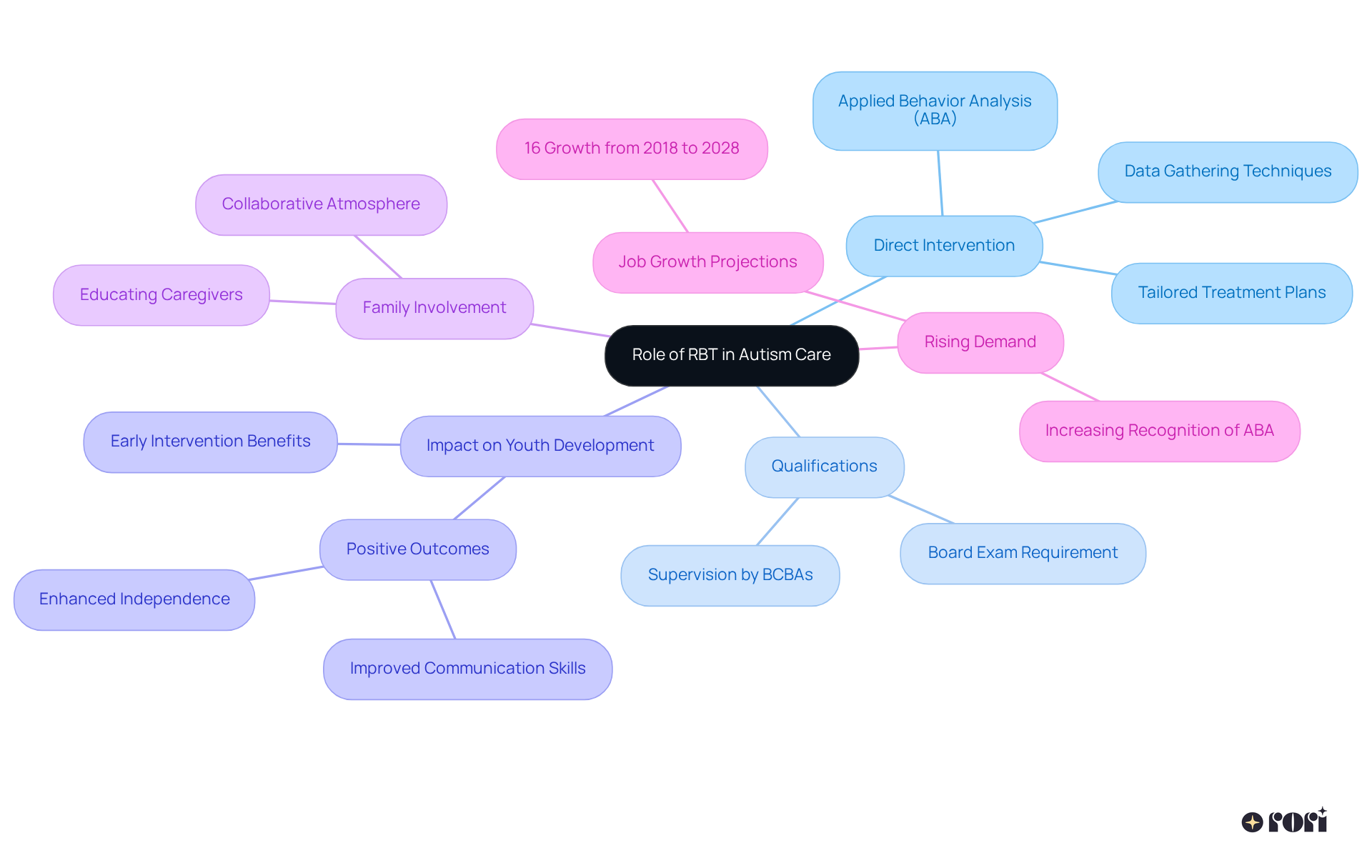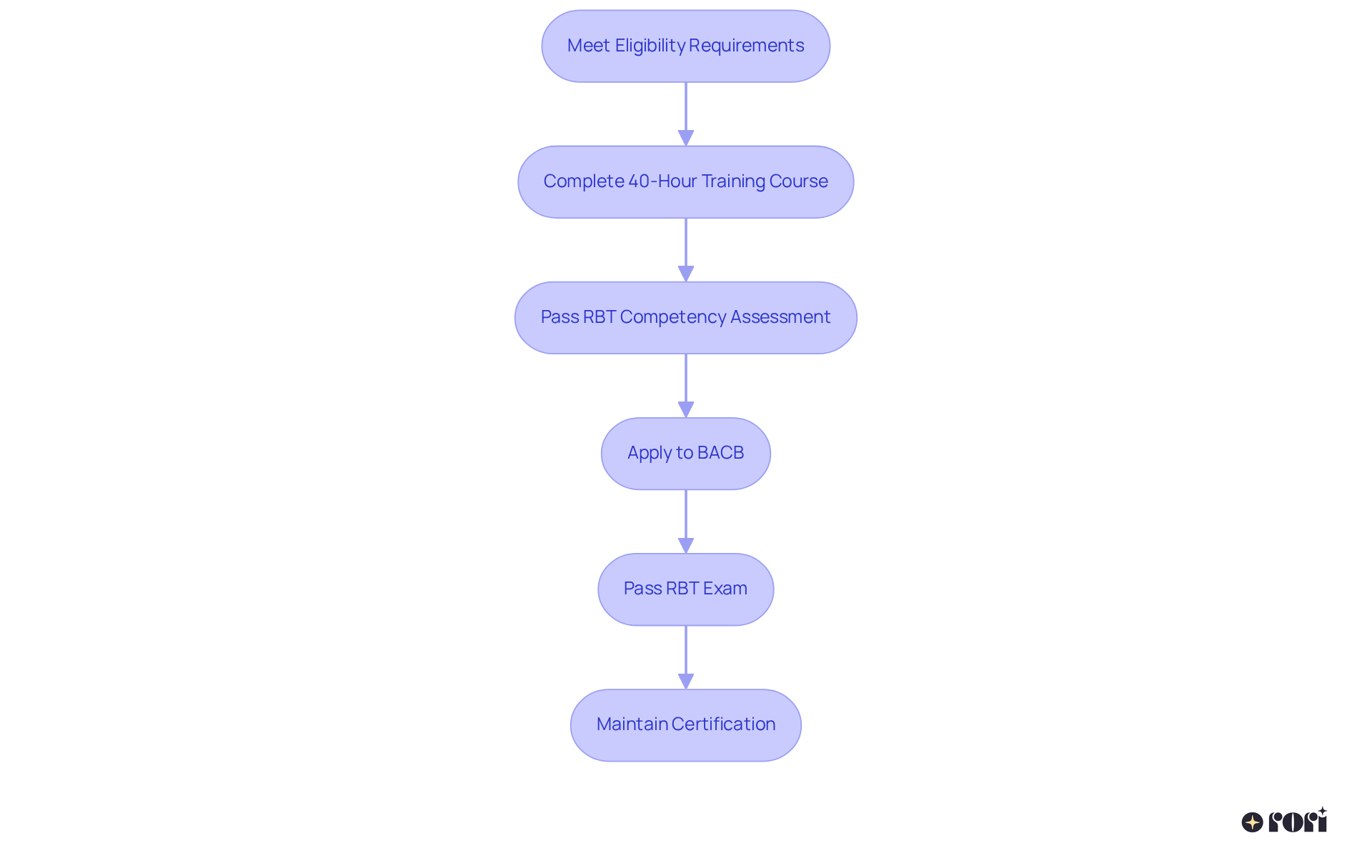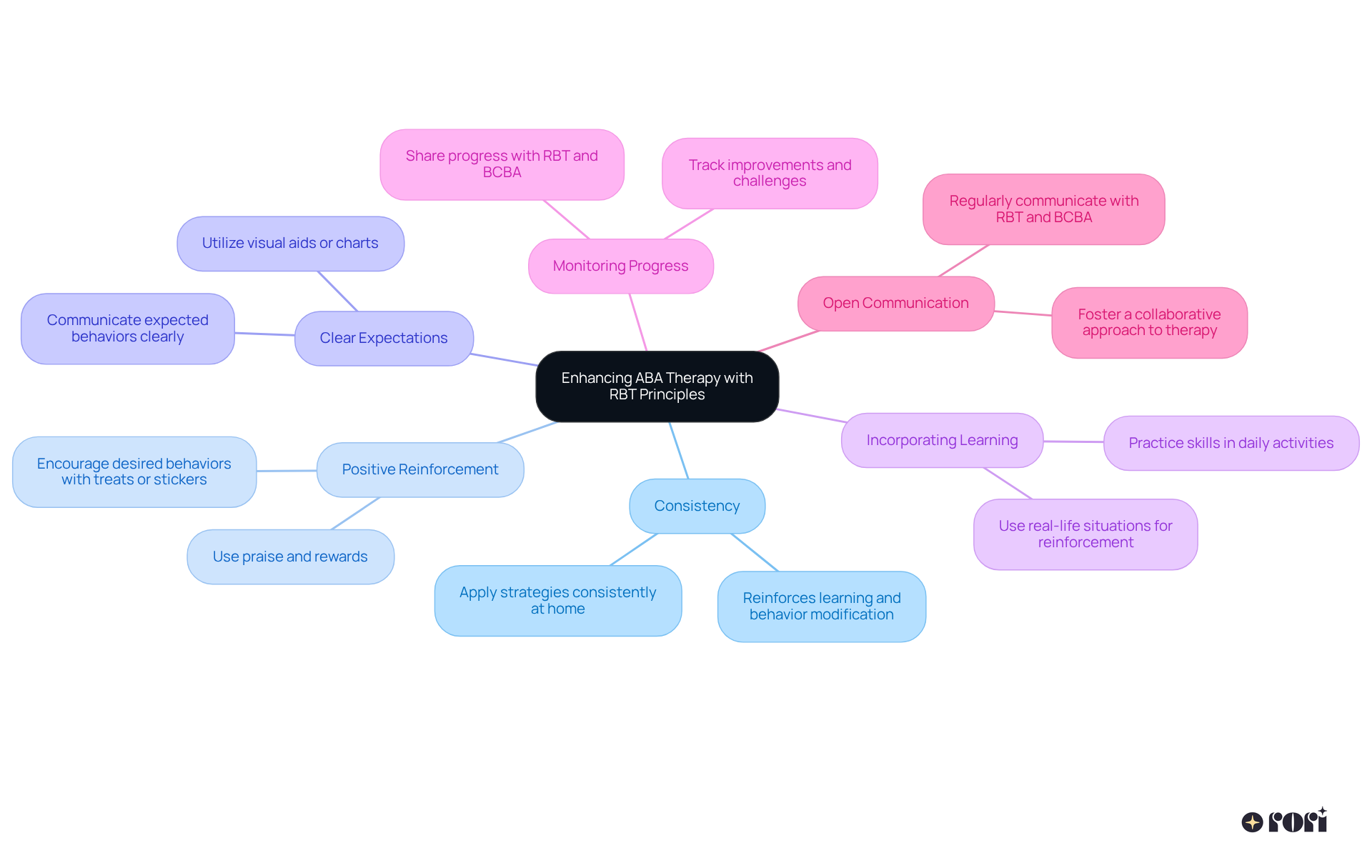The RBT abbreviation stands for Registered Behavior Technician, and their role in autism care is truly vital! They provide direct, individualized intervention using Applied Behavior Analysis (ABA) methods, all under the supervision of Board-Certified Behavior Analysts (BCBAs). 🌟
RBTs are key players in helping children develop important life skills and gain independence. Their contribution to effective treatment plans leads to positive developmental outcomes, which are essential for successful autism care. Let’s explore this together and see how RBTs make a difference in the lives of children and their families!
Understanding the role of Registered Behavior Technicians (RBTs) in autism care is so important, especially in a world where early intervention can make a real difference in a child's development. RBTs provide direct, individualized support through Applied Behavior Analysis (ABA), helping children improve essential skills and foster independence. 🌟
But with the growing demand for these professionals, you might be wondering:
Let’s explore this together!
The RBT abbreviation stands for Registered Behavior Technician, a friendly face in the world of autism care who provides direct, individualized intervention to youth with autism using Applied Behavior Analysis (ABA) methods. Working under the supervision of Board-Certified Behavior Analysts (BCBAs), RBTs play a vital role in implementing tailored treatment plans designed to enhance specific behaviors and skills. Their consistent and structured interventions are crafted to meet each child's unique needs, helping them develop essential life skills, improve communication abilities, and promote greater independence. RBTs truly become indispensable members of the autism care team!
So, how does one become familiar with the RBT abbreviation? Well, individuals must pass a board exam to ensure they are qualified to provide effective treatment. And here's something interesting: the demand for the RBT abbreviation is on the rise! Job openings are expected to grow by 16% from 2018 to 2028, reflecting a growing recognition of ABA's effectiveness, especially when started early in a young person's life. Studies have shown that children receiving at least 20 hours of ABA sessions weekly tend to make significantly more progress than those receiving less, highlighting the crucial role that the RBT abbreviation plays in delivering intensive and effective treatment.
But that’s not all! RBTs also contribute to positive youth development outcomes by ensuring that treatment is not only consistent but also adaptable to the evolving needs of each individual. They use automatic data gathering techniques during sessions, allowing the clinical team to track progress without interrupting the flow of treatment. This information is kept safe, anonymized, and removed after evaluation, ensuring confidentiality while empowering caregivers with insights into their child's growth. Early intervention with ABA has shown improvements in communication skills, cognition, and the intensity of autism symptoms for toddlers starting treatment around age two. RBTs help create a nurturing environment that enhances the effectiveness of ABA practices, making them essential supporters for the children they assist.
Family involvement is another key aspect of this journey! When families participate in therapy sessions, it fosters a collaborative atmosphere that further supports the young person's development. Educating caregivers is crucial, as it equips families with the knowledge and strategies they need to effectively support their child's behavioral goals. As the landscape of autism care continues to evolve, the role of RBTs, referred to by the RBT abbreviation, remains pivotal in implementing effective ABA strategies that empower children to thrive. Let’s explore this together and see how we can support each other on this journey!

Navigating the RBT certification process can be quite a journey for parents, but understanding the essential steps can make it easier:
Understanding these steps can empower parents to navigate the certification journey effectively, contributing to their child’s care and development. Plus, Rori Care encourages parents to take an active role in their child’s treatment, aligning perfectly with the company’s mission to empower families. Let’s explore this together!

To enhance your child's ABA therapy experience, let’s explore some strategies grounded in RBT principles that can make a real difference:
Remember, we’re here to help you every step of the way! Let’s work together to make this journey as smooth as possible for you and your child.

The Registered Behavior Technician (RBT) plays a vital role in autism care, providing direct, personalized interventions with Applied Behavior Analysis (ABA) techniques. By teaming up with Board-Certified Behavior Analysts (BCBAs), RBTs ensure that each child's unique needs are met through tailored treatment plans. This fosters the development of crucial life skills and promotes independence. Their presence not only boosts the effectiveness of autism therapy but also creates a supportive environment for families involved in the treatment journey.
Throughout this article, we’ve highlighted the significance of RBTs in delivering consistent and adaptable care. We’ve outlined the certification process, emphasizing the importance of rigorous training and ongoing education to uphold high standards in practice. Plus, we’ve shared practical strategies for parents, showcasing how RBT principles can be woven into daily routines to reinforce learning and behavior modification effectively.
Ultimately, the role of RBTs in autism care is essential—not just for the children they assist, but also for the families navigating these therapeutic journeys. By understanding and embracing the RBT framework, caregivers can actively participate in their child's development, ensuring they receive the most effective treatment possible. This collaborative approach empowers families and underscores the critical impact that RBTs have in shaping positive outcomes in autism therapy.
Let’s explore this together! We’re here to help you every step of the way as you engage with the RBT framework and support your child's journey.
What does RBT stand for in autism care?
RBT stands for Registered Behavior Technician, a professional who provides direct, individualized intervention to youth with autism using Applied Behavior Analysis (ABA) methods.
What is the role of an RBT?
RBTs implement tailored treatment plans under the supervision of Board-Certified Behavior Analysts (BCBAs) to enhance specific behaviors and skills in children with autism, helping them develop essential life skills, improve communication abilities, and promote greater independence.
How does one become an RBT?
To become an RBT, individuals must pass a board exam to ensure they are qualified to provide effective treatment.
What is the job outlook for RBTs?
The demand for RBTs is expected to grow by 16% from 2018 to 2028, reflecting a growing recognition of the effectiveness of ABA, particularly when started early in a young person's life.
How does ABA therapy benefit children with autism?
Studies have shown that children receiving at least 20 hours of ABA sessions weekly tend to make significantly more progress than those receiving less, highlighting the importance of intensive treatment.
What methods do RBTs use to track progress during therapy?
RBTs use automatic data gathering techniques during sessions to track progress without interrupting the flow of treatment, ensuring that information is kept safe, anonymized, and confidential.
How does early intervention with ABA affect toddlers with autism?
Early intervention with ABA has shown improvements in communication skills, cognition, and the intensity of autism symptoms for toddlers starting treatment around age two.
What is the importance of family involvement in therapy?
Family involvement in therapy fosters a collaborative atmosphere that further supports the young person's development and equips families with the knowledge and strategies needed to effectively support their child's behavioral goals.
Why are RBTs considered essential in autism care?
RBTs are essential because they help create a nurturing environment that enhances the effectiveness of ABA practices, making them indispensable supporters for the children they assist.